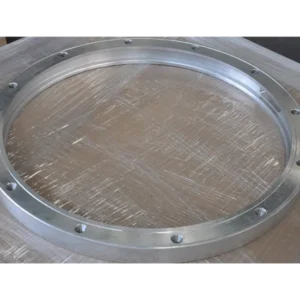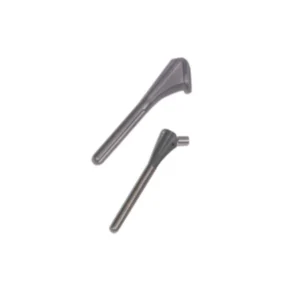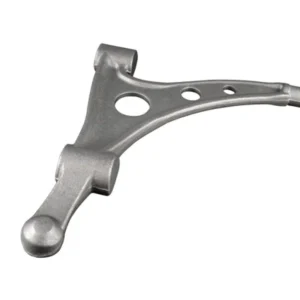Cold Heading Manufacturing: Precision Parts | Welleshaft
Introduction
In the world of manufacturing, precision is paramount. When it comes to creating high-volume, intricate metal components, few processes rival the efficiency and accuracy of cold heading. At Welleshaft, we’re proud to be at the forefront of cold heading manufacturing, delivering precision parts that meet the most demanding industry standards. This blog post delves into the fascinating world of cold heading, highlighting its benefits, applications, and how Welleshaft’s expertise ensures top-notch results.
What is Cold Heading Manufacturing?
Cold heading is a high-speed, cold-forming process used to shape metal at room temperature. Unlike traditional machining, which removes material, cold heading reshapes metal by applying force through dies. This process is particularly well-suited for producing fasteners, such as screws, bolts, rivets, and other complex-shaped components.
Here’s a simplified breakdown of the process:
-
Material Preparation:
-
The process begins with the careful selection of raw material, typically wire or rod, depending on the final part requirements.
-
The material undergoes cleaning and descaling to remove any impurities that could impact the integrity of the formed part.
-
-
Blanking:
-
The cleaned material is then fed into a cutting mechanism that precisely cuts it into “blanks” of specific lengths, ensuring accurate material volume for each part.
-
-
Forming:
-
The blank is transferred into the forming die, a hardened steel tool that dictates the final shape of the part.
-
Under tremendous pressure, the metal blank is forced into the die cavity, causing the metal to flow and fill every detail of the die.
-
Multiple forming stages may be required to achieve the desired complexity, employing progressive dies to gradually shape the metal.
-
-
Ejection and Finishing:
-
Once formed, the part is ejected from the die.
-
Depending on the application, secondary operations such as threading, trimming, slotting, or surface treatments may be applied.
-
Key Benefits of Cold Heading
Cold heading offers numerous advantages over other manufacturing processes:
-
High-Volume Production: The high speed of cold heading makes it ideal for producing large quantities of parts quickly and cost-effectively.
-
Material Efficiency: Because cold heading reshapes metal rather than removing it, there is significantly less material waste compared to machining processes.
-
Excellent Strength and Durability: Cold forming work-hardens the material, increasing its strength and durability.
-
Precision and Consistency: The use of dies ensures consistent dimensions and tight tolerances, resulting in highly precise and uniform parts.
-
Cost-Effectiveness: The process reduces both material costs and manufacturing time leading to significant savings.
Applications of Cold Headed Parts
Cold-headed parts are used across a wide variety of industries, including:
Automotive Industry:
-
Critical fasteners for engine assemblies, chassis, and body structures.
-
Pins and shafts in transmission systems.
-
Components for braking and suspension systems.
Aerospace Industry:
-
High-strength, lightweight fasteners for aircraft structures.
-
Components for actuation systems and control surfaces.
-
Specialized connectors and fittings.
Construction Industry:
-
Bolts, screws, and rivets for structural steel and concrete construction.
-
Anchors and fasteners for building materials.
-
Specialized fasteners for infrastructure projects.
Electronics and Electrical Industry:
-
Electrical contacts, pins, and terminals for circuit boards.
-
Connectors and fasteners for electronic assemblies.
-
Small metal components for various electronic devices.
Consumer Goods:
-
-
Hardware for furniture, appliances, and tools.
-
Components for sporting goods and recreational equipment.
-
Fasteners and fixings for various consumer products.
-
Welleshaft’s Expertise in Cold Heading Manufacturing
At Welleshaft, we combine cutting-edge technology with decades of experience to deliver superior cold-headed parts. Our capabilities include:
-
Advanced Equipment: We utilize state-of-the-art cold heading machines capable of producing complex parts with precision and consistency.
-
Material Versatility: We work with a variety of materials, including steel, stainless steel, aluminum, brass, and copper, to meet our clients’ specific requirements.
-
Custom Design and Engineering: Our experienced team works closely with clients from design to production, ensuring that every part meets or exceeds expectations.
-
Stringent Quality Control: We implement rigorous quality control measures at every stage of the manufacturing process to ensure the highest standards of precision and reliability.
-
Timely Delivery: We understand the importance of deadlines and strive to deliver high-quality parts on time and within budget.
Why Choose Welleshaft for Cold Heading?
Choosing the right manufacturing partner can significantly impact the success of your project. Here’s why you should consider Welleshaft for your cold heading needs:
-
Proven Track Record: We have a long history of delivering high-quality parts to satisfied clients across diverse industries.
-
Commitment to Innovation: We constantly invest in new technology and techniques to improve our processes and stay ahead of the curve.
-
Customer-Centric Approach: We prioritize customer satisfaction and work closely with each client to deliver personalized solutions.
-
Competitive Pricing: We offer competitive pricing without compromising on quality.
Conclusion
Cold heading manufacturing is a powerful and efficient method for creating precision metal parts. At Welleshaft, our commitment to excellence, combined with our advanced technology and experienced team, makes us the ideal partner for your cold heading needs. Whether you require high-volume production of standard fasteners or custom designed components, we’re here to deliver.











Reviews
There are no reviews yet.